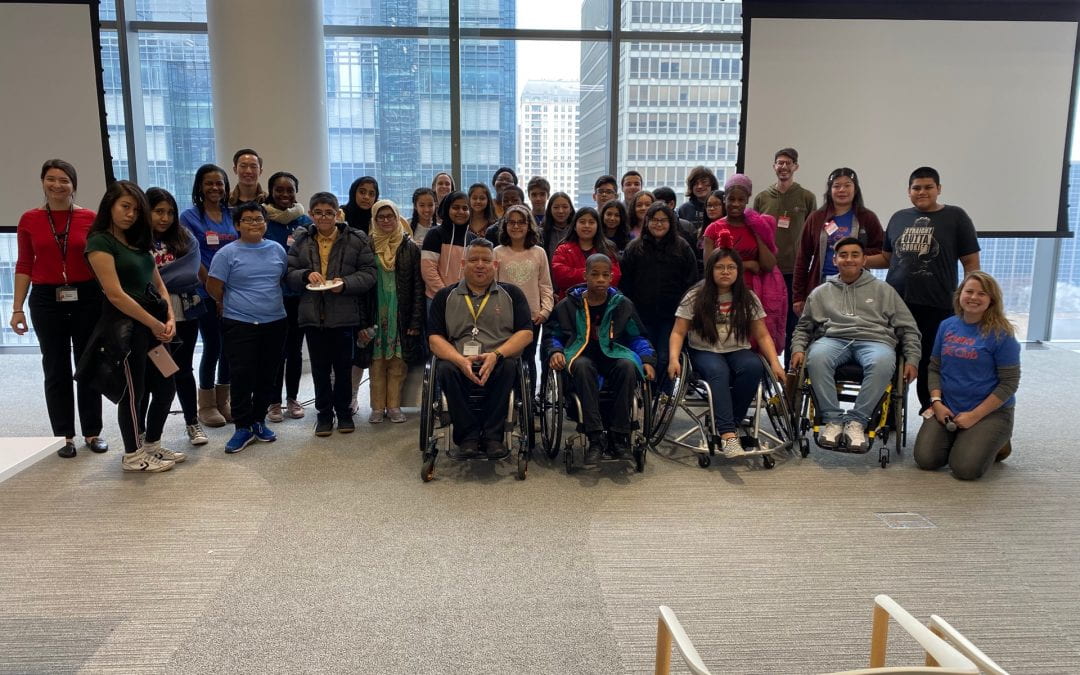Think back to a time when you or a family member was injured. A swarm of physicians, nurses, and physical therapists likely bombarded you with treatments and therapies to help you heal. Although you answered what probably summed to hundreds of questions, you likely never worked with a single researcher. That’s because, for the most part, researchers and patients rarely interact on a daily basis. Patients receive the therapies and treatments developed by researchers in some far-away lab, and researchers use the data collected to further improve these treatments. At least, that’s how it works in most hospitals and rehabilitation centers.
Not at the Shirley Ryan AbilityLab in Chicago. There, a team of physicians and researchers work side-by-side with patients to create an integrative experience that tackles patients’ challenges from all angles.
On January 31, 2019 twenty-eight Science Club students, along with a handful of Science Club mentors (including graduate student Maggie Swerdloff, whose work focuses on developing prosthetics), traveled to the Shirley Ryan AbilityLab. Students in Science Club are currently exploring the “Get A Grip” curriculum that immerses them in the engineering and design process to create a prosthetic arm. They’re given a scenario- an astronaut needs a prosthesis to help her collect moon rocks- and spend several months developing a solution. As part of the program, students were given the chance to tour the Shirley Ryan AbilityLab to deepen their understanding of the work done there that connects to prosthetic engineering.
The day started with a presentation by Shirley Ryan AbilityLab employee Lisa Rosen, educating students on patients that are differently abled. Another employee, Derek Daniels, presented the wide range of adaptive sports teams open to those with a variety of abilities. The most impactful experience for the students, however, was meeting Jorge Alfaro, a peer mentor and patient at the Shirley Ryan AbilityLab who uses a wheelchair. He encouraged students to try his different wheelchairs, allowing them to feel the differences between them and experience some of the challenges faced by wheelchair users on a daily basis. Science Club Senior Program Coordinator Emily Mathews, who chaperoned the trip, said the hands-on experiences and conversations with Alfaro helped the youth connect with users of prosthetics and adaptive devices.
Hearing the personal stories of prosthesis-wearers helped immerse the kids and get them excited about the “Get a Grip” quarter. Ashley Jennings, Science Club Program Coordinator says there was “definitely a correlation between the students’ excitement over the field trip and their interest in the project.” Science Club staff and partners hope to organize field trips more frequently, in hopes that allowing students to see the real-world applications of their studies will continue to spark interest.
2020 UPDATE: Tanicia Burns, Science Club Program Coordinator reported that a Science Club youth shared that the trip to the Shirley Ryan AbilityLab and Jorge’s story taught her perseverance, gratitude, and courage. Many youth from Science Club wrote special thank you letters to Jorge and Shirley Ryan AbilityLab employees to express their appreciation of an enriching experience!

